The Polish breed of chickens has an iconic look that makes them truly unique. What makes them so fashionable is their bouffant style crest of feathers and unusual v-shaped comb. This breed can be a bit quirky because their glorious crowns limit their vision. They are typically tame, affectionate birds and will add visual appeal to your flock.
Polish Chicken Overview
| Feature | Polish Chicken |
| Purpose | Ornamental, Egg-laying |
| Egg Color | White |
| Egg Size | Medium to Large |
| Broody | No |
| Heat Tolerance | Yes |
| Cold Tolerance | Limited |
| Comb Type | V-shaped |
| Egg Production | 100-150 per year |
| Chicken Skin Color | White |
| Life Span | Not specified |
| Adult Weight (Hen) | Around 4.5 lbs |
| Adult Weight (Rooster) | Around 6 lbs |
| Backyard Friendly | 4/5 |
The sweet-natured Polish chicken attracts many due to its gorgeous crested head flaunting abundant lovely feathers. Not only is it an attractive bird, but also lightweight and resilient, meaning it can be raised in a wide variety of climates.
With such a majestic look affecting many enthusiasts, the Polish chicken stands as one of the most popular show birds in the world. If you want to delve into the world of bird exhibitions, then this breed might be a good starter for you!
Living in colder countries shouldn’t discourage any potential admirer either. This breed boasts hardy immune systems enabling them to withstand many conditions efficiently! However, a heat lamp is still recommended.
History of Polish Chickens
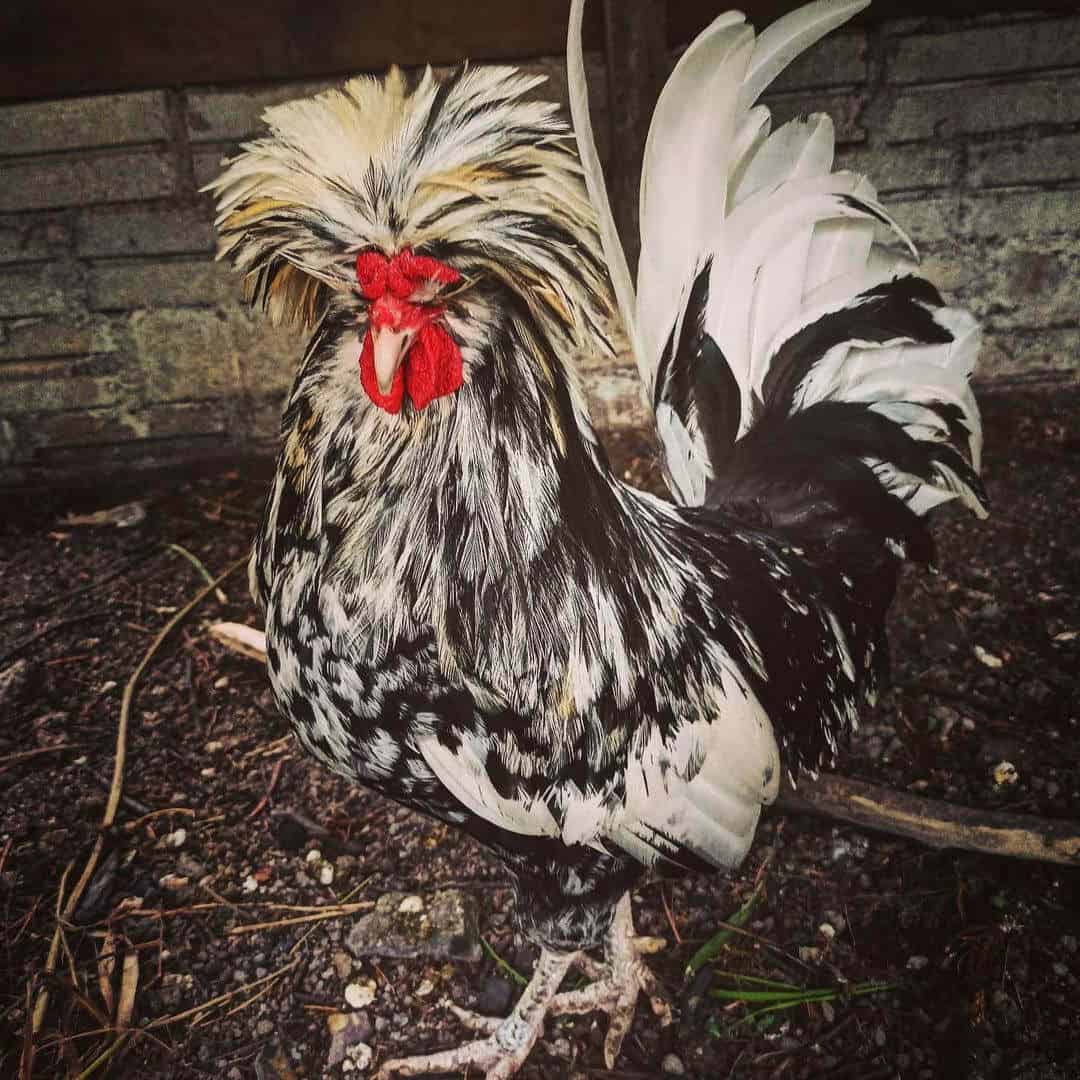
Not much is agreed upon regarding the history of Polish chickens except that their history is obscure, and most experts don’t believe they came from Poland. The most popular theory is that their name stemmed from their appearance. The fabulous crests resemble the feathered caps worn by Polish soldiers.
Those who study poultry history believe that Polish chickens first came from Spain, then brought to Holland when the Spaniards took over the lowlands. The Dutch are often the source for refining the colors and distinguishing the crests in the 18th century.
Another theory is that their name came from the Dutch word pol, which means head. It would have been made in reference to the Polish trait of a dome-shaped skull. They could have been brought by Asian Mongols to Europe during medieval times, thus explaining their arrival in Poland.
Polish chickens were memorialized in England back in the 1700s as they were featured in works of art. Famous Dutch and Italian artists painted them in the 16th – 18th centuries. They were even noted in the literature written during this same time.
Polish chickens found their way into France, where they were mainly for producing eggs. They crossed over to America sometime between 1830 and 1840. By 1850 they were well-spread across America and touted for their egg production.
It was only when Leghorn chickens made their debut that Polish chickens began losing their clout as egg layers. Farmers began replacing them with newer breeds, kept around for exhibition purposes.
Today, Polish chickens still retain their unusual and exciting characteristics. They are currently very popular as a show breed but can certainly lay eggs for the backyard chicken enthusiast who wants a flock with some charisma.
Polish Chicken Breed Standard
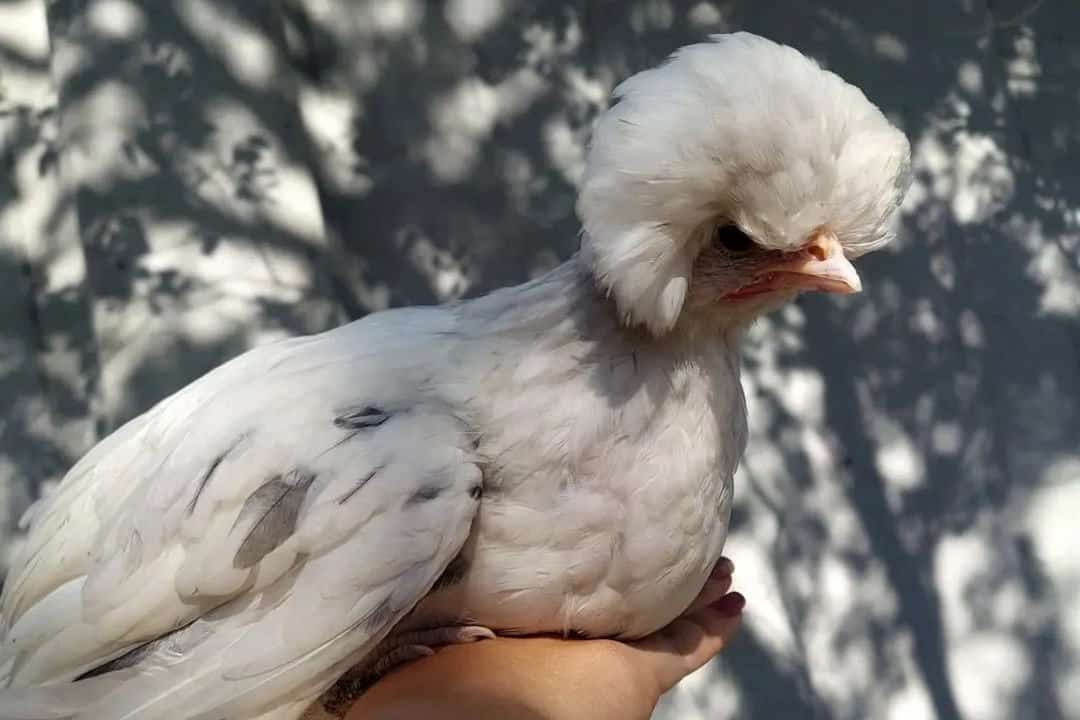
Polish chickens are best known for their fluffy crest feathers. Their owners often refer to their head feathers as “pom-pom.”
They are popular as ornamental birds but are also known for their friendly personalities. Their breed is classified by the American Poultry Association as both standard and bantam sizes.
Breed Standard:
- Class: Continental
- Type: Bantam and Large Fowl
- Purpose: Ornamental
- Size:4 to 6 pounds
- Rarity: Common
- Varieties: White Crested Black, Black Crested White, Bearded and non-bearded in the colors:White, Silver, Golden, Buff Laced
Polish Chicken Appearance
Their fancy features include a v-shaped comb and their iconic crest of head feathers. They do not have feathers on their legs and, like most chicken breeds, they have four toes on each foot.
Polish roosters have a red v-shaped comb that may be concealed beneath their crest. The wattles are red, and the earlobes are white.
Their head crests arise from a bony prominence at the top of their skull. Polish chickens can be bearded depending on their variety. If they are bearded, there will be an abundance of feathers around the face and head.
The leg color is typically grey. Feet and legs shouldn’t have any feathering. Males usually weigh around 6 pounds, and hens weigh around 4 ½ pounds. Their skin is white.
Personality and Temperament of Polish Chickens

While Polish chickens are friendly, love some handling, and are ideal for children, their quirky personalities stem from the fact that they can’t see well because of the headdress. They have been characterized as easily frightened, skittish, and flighty.
Polish chickens do best if handled gently and given affection and reassurance. They are best suited for compassionate chicken enthusiasts who don’t mind giving them extra support.
Although gentle, Polish chickens tend to be inquisitive and like to investigate. It is not uncommon to hear a story about a Polish chicken caught somewhere unusual because of its curious personality.
They do tolerate and probably do better in confinement. If they are in a flock and separated from their mates, they will cry out until the other hens respond, and they find their way back.
This breed will often be relatively low on the pecking order. This is due to their mild temperaments. Mixing them with other breeds, you must be careful that more aggressive breeds won’t resist yanking out those dangly head feathers.
Because the Polish breed of chicken is so docile, they make excellent birds for children to show at the county fair. They will attract lots of attention because of their unique characteristics.
Polish Chicken Egg Laying Capabilities
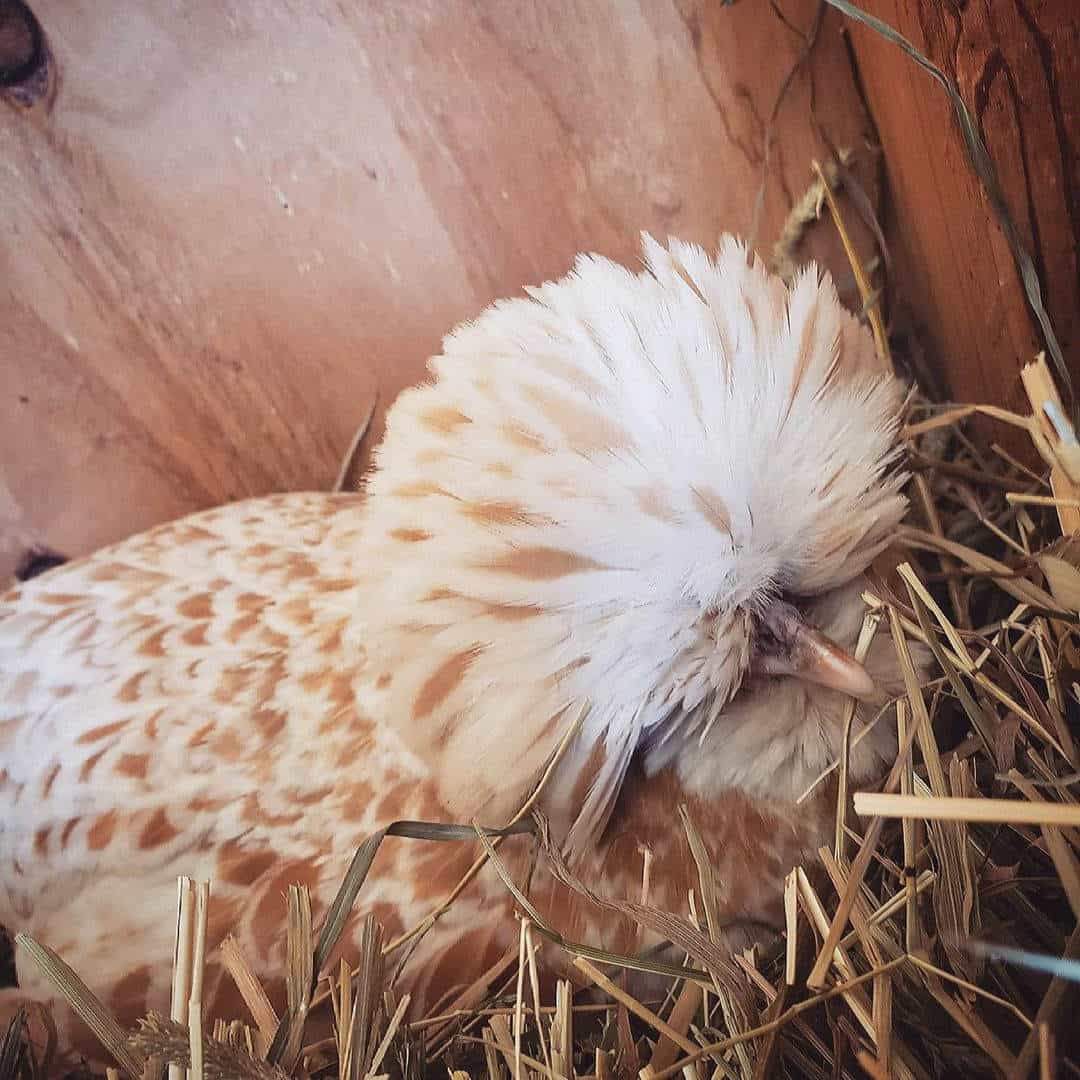
The consensus by chicken owners is that Polish chickens are unreliable egg layers. A typical hen will lay 2 or 3 eggs a week. Some of their production issues are based on diet. If not fed a proper diet, these chickens may not lay at all. They do best on 16% egg-laying feed and should always be offered a calcium supplement.
The yearly egg number is around 100-150 medium to large eggs. They have been known to lay later in the egg season than other breeds. It takes them a while to warm up, but they are pretty consistent once they do.
Polish chicken lay white eggs. They begin laying around five months of age, which is earlier than most other breeds. Similar to many other egg-laying breeds, they are not bred for their mothering instincts. They will not go broody and try to stay in the nest to hatch their eggs.
Care and Health Issues
Both the standard and bantam-sized Polish chickens have similar needs for their care.
Requirements
- A coop that protects them from the elements and keeps them safe from predators.
- A high-quality feed that promotes healthy feathers and the nutrients required for laying eggs.
- A constant source of clean water.
- Entertainment of some sort, perhaps a chicken swing.
Their needs are the same as most other breeds. Remember that with their lack of vision, they should have a clutter-free environment that’s easy to navigate. The safer they feel, the happier they will be. Be sure there is nothing they can get trapped in when their curiosity takes over.
Special Care
If you acquire your Polish chickens as young chicks, they must be observed during the first few weeks. This is due to their bony head prominence. Like a human babies, their skulls do not knit together until they get a little older. This makes the babies susceptible to a fatal head injury if pecked like a chick.
Lice and Mites
Due to the density of feathers on their heads, as adults, they need to be checked frequently for lice and mites. If found, they should be treated accordingly. You also might want to trim the feathers blocking their vision. This will make your birds’ lives easier and, indeed, less scary. If you are showing your bird, you cannot trim the head feathers during the show season.
Provide Feather Maintenance
Taking great care of the feathers of Polish chickens is absolutely essential for them to stay healthy. Preening should be done regularly in order to keep their feathers free from dirt, waste, and painful irritations that can become infected if left unchecked.
Healthy, clean feathers will also help make your gorgeous chickens look extra presentable when joining show competitions! The beautiful glossy plumage that Polish birds are known for must be maintained for competitions or exhibitions. It’s simply part of caring properly to keep their majestic charm.
Tips for Raising Polish Chickens
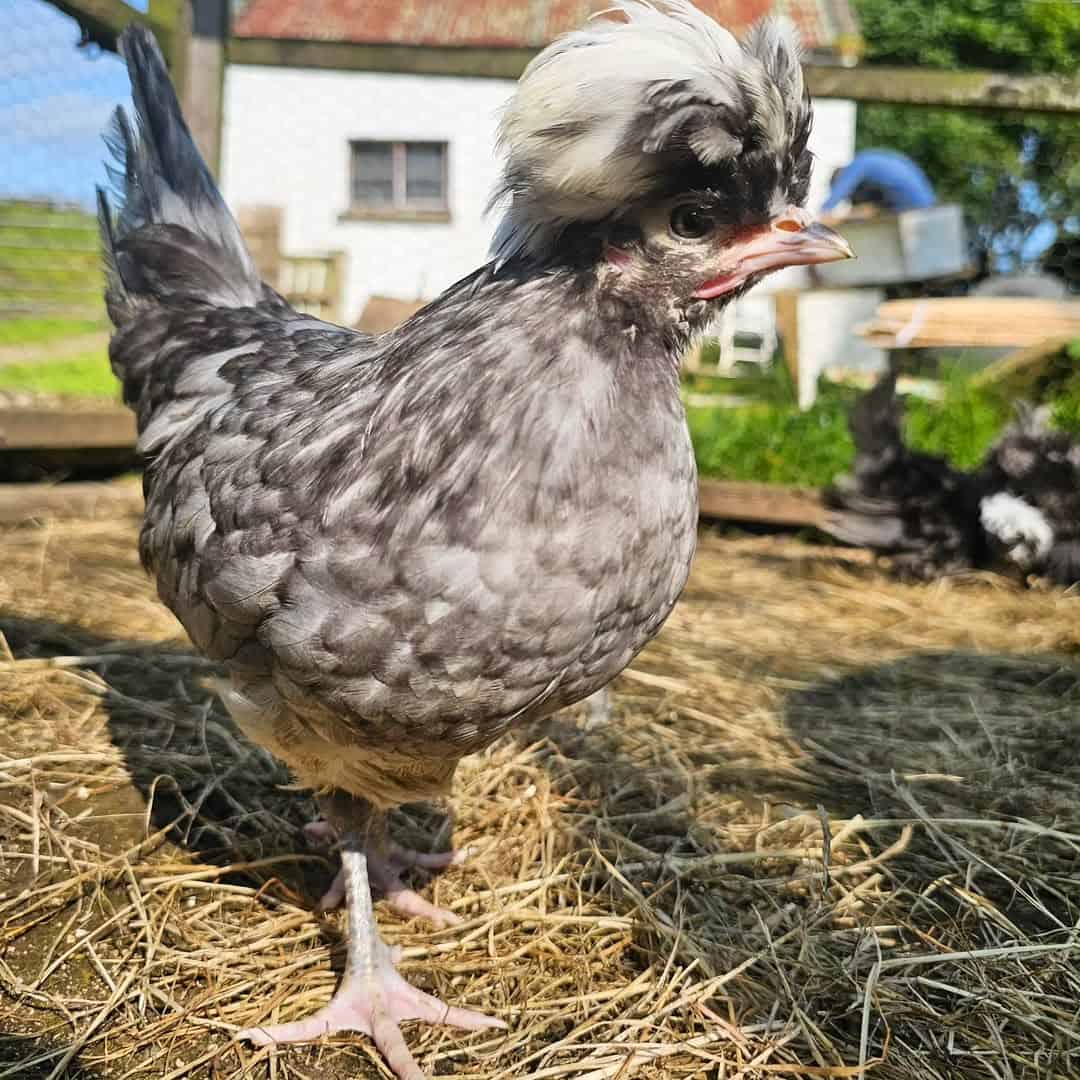
Provide Heat Lamp
Besides the head feathers, Polish chickens don’t have any unusual requirements or health issues other than they are not cold-hardy. They will need a heat lamp in cold weather. They are heat tolerant but will need access to fresh water in summer to avoid heatstroke.
Regular Handling
The more you handle these chickens, the more tolerant they will be to hold and groom. Since these birds may require the feathers to be cut around their eyes, handling them from a young age will make this task easier.
Use Treats to Train Them
Try using treats like mealworms or black soldier fly larvae to reinforce good behavior while being held. Rewards will go a long way in teaching them to look forward to being held rather than running away when you approach.
Provide Regular Grooming
If you decide to raise your Polish chickens for showing or exhibiting, handling them will be essential. You can look up tips for chicken grooming to find out how to best present a groomed Polish chicken. These chickens do not like to get wet, so keep that in mind
Clean Crest Feathers
Taking care of the crest feathers of a Polish chicken is essential because the feathers make up an iconic part of its physical appearance. Not only that, but it can also help protect from the elements and provide insulation.
This makes the crest essential for any prolonged outdoor exposure in colder climates. As Polish chickens are not cold-hardy, this can protect them against the harmful effects of the cold.
Additionally, these long plumes act as a form of charm that adds to this breed’s unique quality. For show or exhibition purposes, taking care to groom and shape your bird’s feathering properly will ensure they remain healthy..
Even though the Polish breed is a popular and eye-catching bird, there is some concern over their dwindling numbers. The American Livestock Breed Conservancy has recorded that their numbers are getting lower. Those who love this quirky and loveable breed should take measures to promote them and their beautiful qualities.
Summary
Polish chickens are not only wonderfully quirky and adorable, but their personalities and antics will make you smile. While they are not prolific egg layers, they are worth raising simply for their visual appeal. They are relatively easy keepers, friendly, loveable, and great with kids. Consider adding some Polish ladies to your flock for fun and variety.

Joseph Hudson has been raising chickens for over 15 years. In 2018, he completed the Agriculture & Natural Resources program at Mt. San Antonio College. He currently raises over 1400 chickens on his 7.5-hectare farm. He keeps sharing his experience on raising healthy and happy chickens on Chicken Scratch The Foundry.
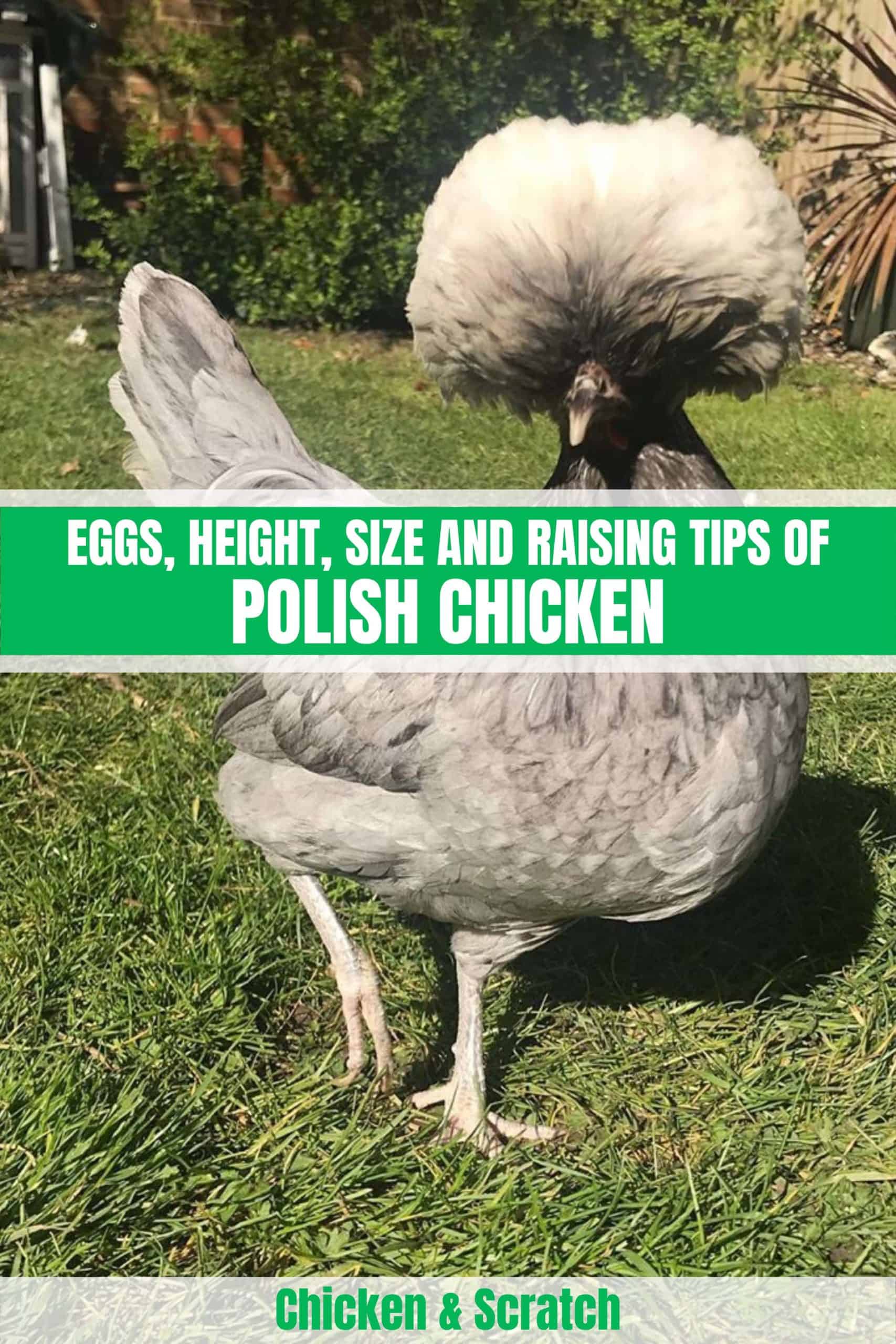








i want tou buy polish nd susexx chiks in pakistan
Is that a room in your house where the video was made? What type of bedding are they on?
This is the best Website ever thank you for telling me all of this!!! 🙂
😍😍😍